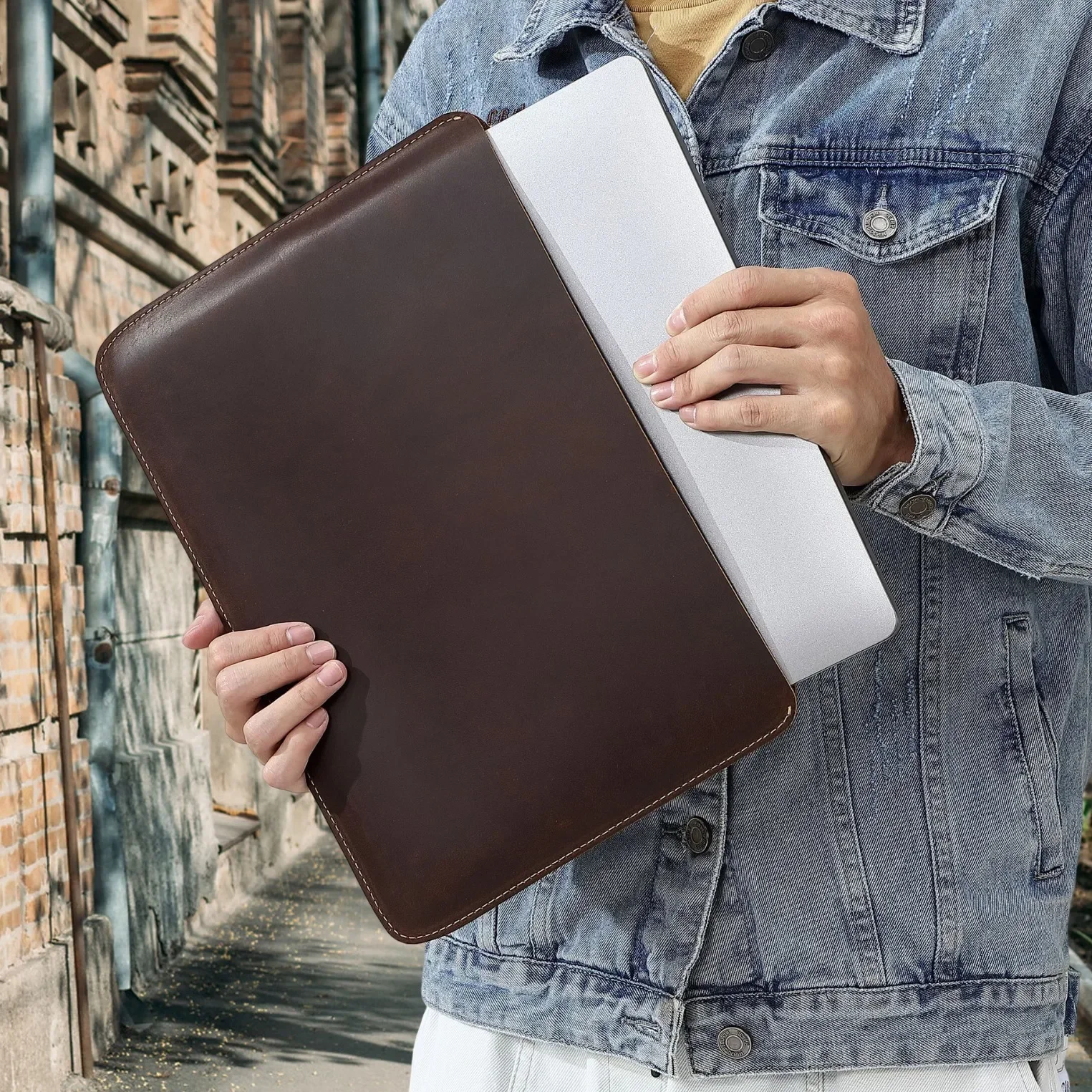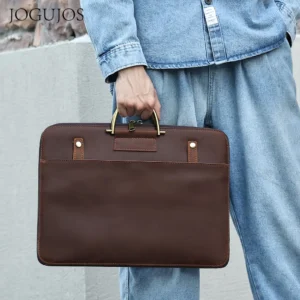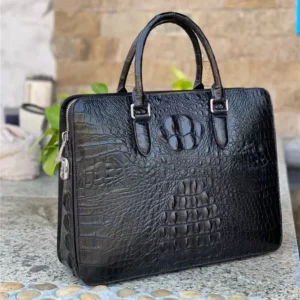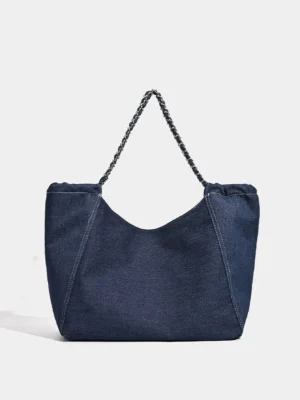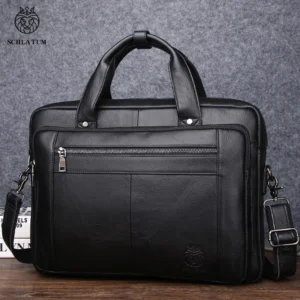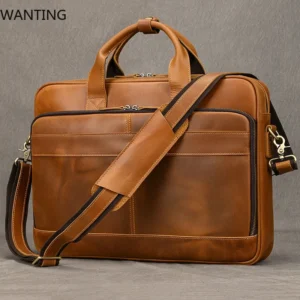Understanding the Document-Leather Relationship
Your leather bag and important documents have a complicated relationship. When stored improperly, documents can bend, crease, or tear while simultaneously causing damage to your leather bag through ink transfer, weight stress, or moisture issues. The way you store papers in your leather bag matters for both the longevity of your documents and the pristine condition of your investment piece.
Proper document storage addresses several critical concerns:
- Prevents permanent creases and folds in important papers
- Protects documents from water damage and environmental factors
- Preserves the shape and structure of your leather bag
- Prevents ink transfer that can permanently stain leather interiors
- Maintains professional presentation of both your bag and documents
The relationship between leather and paper requires thoughtful management as each can affect the other negatively when handled carelessly. Understanding this fundamental relationship is the first step in organizing documents in leather bags effectively, ensuring both remain in excellent condition for years to come.
For professionals who regularly transport documents, knowing how to properly utilize leather briefcase document compartments can dramatically extend the life of both your papers and investment bag.
Essential Document Protection Strategies for Leather Bag Owners
Implementing a consistent document protection strategy saves both your papers and your premium leather bag from unnecessary wear. Rather than treating document storage as an afterthought, successful professionals develop intentional habits that become second nature.
Effective document protection strategies include:
- Using document separators to prevent papers from rubbing against leather interiors
- Establishing a consistent organization system that minimizes handling and shuffling
- Removing unnecessary papers daily to prevent weight strain on bag structure
- Keeping writing instruments in dedicated holders rather than loose with documents
- Storing documents vertically when possible to prevent bending and creasing
- Using acid-free folders and sleeves for documents that remain in your bag long-term
Studies show that documents protected with proper storage solutions are 80% less likely to experience damage, while simultaneously reducing wear on bag interiors by similar percentages. These protection strategies form the foundation of proper document management in leather bags.
The principles of mastering document organization directly impact how effectively you can protect both papers and your leather bag. Additionally, understanding broader principles for storing leather bags complements your document protection strategy.
Professional Document Holders That Preserve Bag Interiors
Selecting the right document holders creates a protective barrier between your important papers and your bag’s interior. The key is finding solutions that are slim enough to fit comfortably without adding significant bulk or weight.
Rigid Document Protectors
These provide maximum protection against bending and creasing. Look for options with rounded corners to prevent them from catching on leather interiors. Hard-sided, slim portfolios made from lightweight materials offer excellent protection without adding excessive weight to your bag.
Flexible Document Sleeves
More adaptable to space constraints, flexible sleeves made from acid-free, non-abrasive materials work well when rigid holders are impractical. The best options feature smooth exteriors that won’t scratch leather interiors and protective coatings that prevent moisture transfer.
Material Considerations
Always select document holders made from materials that are compatible with fine leather:
– Acid-free materials prevent chemical transfer that can damage both papers and leather
– Non-slip finishes prevent unnecessary movement within the bag
– Water-resistant coatings provide an additional layer of protection
– Microfiber or felt exteriors are particularly gentle on leather interiors
For maximum document protection, dedicated leather document bags offer specialized compartments designed specifically for paper storage.
Preventing Document Creasing: Techniques for Flat Storage
Maintaining flat, uncreased documents requires strategic placement within your leather bag. The challenge increases with softer, more flexible bag styles that don’t provide rigid structure.
Strategic Placement Techniques:
- Place documents against the bag’s largest flat surface, usually the laptop compartment or back panel
- Use the bag’s structure to your advantage by positioning papers parallel to rigid areas
- Store papers in the center of the bag rather than along folding points or seams
- For soft bags, insert a slim rigid divider to create a flat surface for document storage
- Avoid overstuffing compartments, which forces documents to bend and conform to curved surfaces
When to Fold vs. Keep Flat:
– Standard letter-sized documents should remain unfolded whenever possible
– If folding is necessary, make a single clean fold rather than multiple creases
– Consider rolling rather than folding larger documents when appropriate
– For temporary transport of oversized documents, a single loose fold is preferable to tight creasing
For professionals who frequently transport important papers, slim leather portfolio briefcases provide built-in flat storage solutions that eliminate many common creasing issues.
Moisture and Liquid Protection: Safeguarding Papers and Leather
Water damage presents a double threat—permanently warping documents while potentially staining and degrading leather. Both materials are highly susceptible to moisture damage, making prevention essential.
Moisture Prevention Solutions:
- Use waterproof document sleeves for valuable papers during commutes
- Position water bottles and liquid containers in external pockets, never alongside documents
- Apply water-resistant treatments to the exterior of your leather bag for first-line defense
- Consider silica gel packets in document compartments during humid weather
- Always thoroughly dry hands before handling documents inside your leather bag
Emergency Response to Moisture:
If your documents or bag interior gets wet, quick action is essential. Remove all papers immediately and pat (don’t rub) the leather interior dry with an absorbent cloth. Place documents on a flat surface to air dry naturally, and never use heat sources to accelerate drying as this can cause warping and further damage.
Understanding proper techniques for cleaning stains from leather bags can help mitigate damage if moisture exposure occurs despite preventative measures.
Strategic Placement: Where to Store Documents in Different Bag Styles
Different bag styles offer unique document storage opportunities and challenges. Understanding the optimal placement for your specific bag maximizes both protection and accessibility.
| Bag Type | Optimal Document Placement | Special Considerations |
|---|---|---|
| Briefcase | Dedicated document compartment or against back panel | Use dividers between documents to prevent shifting |
| Messenger Bag | Against the back panel in a rigid sleeve | Secure papers to prevent movement during active carrying |
| Tote | Center of bag in a rigid portfolio | Create structure with an insert if the bag is soft |
| Laptop Bag | Adjacent to laptop compartment (not inside it) | Use heat-resistant sleeve to protect from device warmth |
| Backpack | Flat against laptop sleeve or in front organizer | Always use rigid protection due to compression risks |
When placing documents, always consider weight distribution. Heavy document loads should be positioned close to the bag’s carry point (handle or strap attachment) to prevent uneven strain on the leather structure.
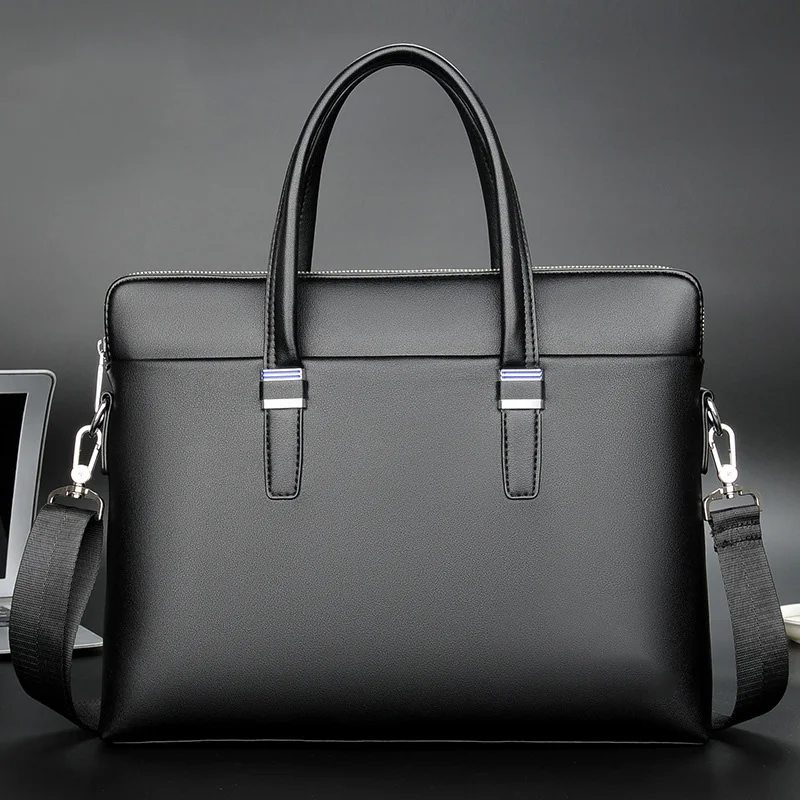
For professionals seeking optimal organization, classic laptop briefcases often feature thoughtfully designed compartments that accommodate both technology and documents.
Protecting Against Ink Transfers and Stains
Ink transfer represents one of the most common and permanent forms of damage to both documents and leather bag interiors. Prevention requires attention to detail and consistent habits.
Common Ink Transfer Risks:
– Uncapped pens in document compartments
– Freshly printed documents with wet ink
– Highlighting or marking papers inside the bag
– Business cards with fresh printing
– Newspapers and magazines with non-fixed inks
Prevention Best Practices:
– Store all writing instruments in dedicated pen loops or cases
– Allow printed documents to fully dry before placing in your bag
– Use blotter paper between freshly written notes and other papers
– Test new document types for ink transfer before regular transport
– Place a protective barrier between any printed materials and leather surfaces
For minor ink exposure, quick action is critical. Address the issue immediately using appropriate leather cleaning methods rather than letting the stain set, which dramatically reduces removal chances.
Leather commuter totes with protective interiors provide additional safeguards against accidental ink transfer while maintaining professional style.
Organizational Systems for Quick Document Access
Efficient document organization balances protection with accessibility, allowing you to retrieve exactly what you need without disturbing other papers or unnecessarily handling items.
Creating an Intuitive Filing System:
- Categorize by Priority: Position frequently accessed documents toward the front of your organization system
- Create Visual Distinctions: Use different colored folders or tabs for different document categories
- Implement Consistent Placement: Assign specific locations for different document types
- Utilize Dividers: Separate documents with slim dividers to prevent shuffling
- Employ the Rule of Three: Limit your main categories to three for simplicity (urgent, reference, archive)
Practical Organization Methods:
- Use transparent sleeves for documents you need to view without removing
- Implement a color-coding system consistent with your office filing system
- Position business cards in dedicated holders rather than loose among papers
- Create a “daily documents” folder for items needed specifically that day
These organizational principles build upon concepts explored in our ultimate guide to leather bags for documents, which provides comprehensive insights for professionals.
Handling Different Document Types: From Receipts to Contracts
Different document types require specialized storage approaches to maintain their integrity while in your leather bag.
Small Items (Receipts, Business Cards):
Store these in dedicated small pockets or card holders to prevent them from becoming lost or crumpled at the bottom of your bag. Consider an accordion-style receipt holder for expense tracking.
Legal-sized Documents:
For documents larger than standard letter size, use a folding portfolio with an expandable spine. Place these larger items against the back panel of your bag to maintain their shape.
Glossy Materials and Photographs:
These require non-stick sleeves to prevent adhesion to each other or to leather surfaces. Store them in protective sleeves made specifically for glossy papers.
Notebooks and Planners:
Position these in dedicated compartments separate from loose papers. Choose notebooks with protective covers to prevent page corners from bending.
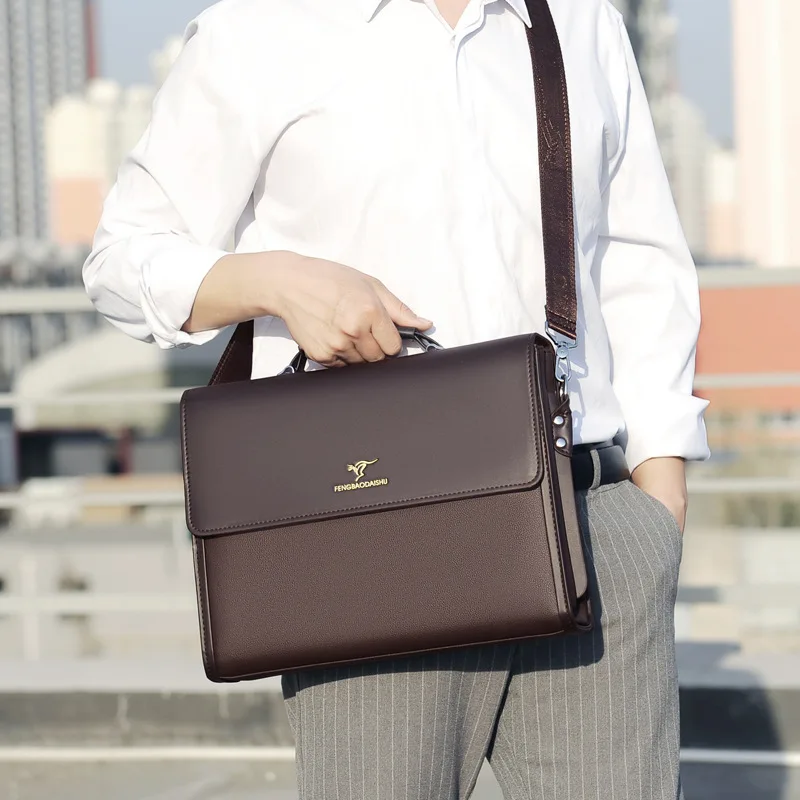
Men’s classic leather briefcases typically feature varied compartments designed to accommodate different document sizes and types while maintaining organization.
Long-Term Document Storage in Daily-Use Leather Bags
Some documents remain in your bag for extended periods, creating unique storage challenges. Balancing convenience with protection requires intentional management.
Best Practices for Long-Term Bag Documents:
- Rotate documents periodically to prevent pressure damage in one spot
- Use acid-free dividers between papers that stay in your bag long-term
- Remove and air out papers weekly to prevent moisture buildup
- Consider transferring truly long-term documents to a dedicated storage system
- Periodically check bag corners and seams where documents may be creating pressure
Weekend Storage Recommendations:
When your bag will sit unused for days, remove all but the most essential documents. This prevents unnecessary weight strain on the leather structure and reduces the risk of moisture or temperature damage to papers.
Understanding proper leather care and conditioning complements your document storage strategy, ensuring both your papers and bag remain in excellent condition despite daily use.
Specialty Inserts and Organizers: Worth the Investment?
Dedicated bag inserts and organizers can dramatically improve document protection and accessibility, but not all options provide equal value.
Benefits of Quality Organizers:
– Create structure in soft-sided leather bags
– Provide dedicated spaces for different document types
– Protect bag interiors from wear and tear
– Allow quick transfer of entire organization systems between bags
– Minimize document movement during transport
Features to Prioritize:
– Lightweight materials that don’t add unnecessary bulk
– Non-abrasive exteriors that won’t damage leather interiors
– Adjustable dividers for customizable organization
– Water-resistant compartments for added protection
– Secure closure systems that prevent document shifting
Men's Classic Leather Briefcase, Slim Leather Laptop Briefcase, Slim Leather Portfolio Briefcase
$93.67 Select options This product has multiple variants. The options may be chosen on the product pageClassic Laptop Briefcase, Men's Classic Leather Briefcase, Slim Leather Attache Case
Price range: $353.50 through $360.81 Select options This product has multiple variants. The options may be chosen on the product pageBlack Leather Briefcase, Leather Document Bag, Men's Classic Leather Briefcase
Genuine Crocodile Leather Executive Briefcase with Password Lock – Premium Business Document Carrier$1,201.87 Select options This product has multiple variants. The options may be chosen on the product pageCanvas & Leather Messenger Bag, Leather Commuter Tote
$80.41 Select options This product has multiple variants. The options may be chosen on the product pageBlack Leather Briefcase, Classic Laptop Briefcase, Men's Classic Leather Briefcase, Slim Leather Laptop Briefcase
$228.72 Select options This product has multiple variants. The options may be chosen on the product pageBrown Leather Briefcase, Classic Laptop Briefcase, Crazy Horse Leather Satchel, Men's Classic Leather Briefcase
Price range: $172.15 through $200.02 Select options This product has multiple variants. The options may be chosen on the product page
For budget-conscious professionals, DIY alternatives include using modified file folders with added backing or creating custom dividers from acid-free cardstock. These solutions provide many benefits of commercial inserts at a fraction of the cost.
Exploring document-friendly bag interiors provides additional context for selecting or creating the ideal organization system for your specific needs.
Quick Fixes for Common Document Storage Emergencies
Even with careful planning, document emergencies happen. Knowing how to respond quickly can prevent minor issues from becoming permanent damage.
Bent or Creased Important Documents:
– Place the document between two clean, heavy books immediately
– For severe creases, lightly dampen the reverse side and then press between absorbent paper and heavy weights
– Never use an iron or direct heat on important documents
Wet Paper Management:
– Blot (don’t rub) excess moisture with absorbent paper
– Separate individual sheets to prevent sticking
– Allow to air dry naturally on a flat surface
– Keep away from the leather interior to prevent water transfer
Torn Document First Aid:
– Use clear document repair tape (not regular tape) on non-essential areas
– Create a temporary sleeve from two clear sheets to contain all pieces
– Keep torn documents separate from others to prevent further damage
These emergency responses complement regular leather briefcase maintenance, creating a comprehensive approach to protecting both your documents and bag.
FAQ: Your Document Storage Questions Answered
Q: Will heavy documents damage my bag’s structure over time?
A: Yes, excessive weight can distort leather and strain seams. Distribute document weight evenly and regularly remove unnecessary papers to preserve your bag’s structure.
Q: What’s the best way to transfer documents when switching between bags?
A: Use a slim transfer portfolio or document organizer that can move between bags while keeping papers protected and organized. This prevents the need to individually move each document.
Q: Are leather interiors or fabric interiors better for document storage?
A: Each has advantages. Leather provides more structure but can be susceptible to ink transfer, while fabric offers more friction to prevent document sliding but may trap paper dust. In either case, using proper document holders makes the interior material less relevant.
Q: How should I store important documents when traveling?
A: Use waterproof document sleeves, store in the center of your bag away from exterior walls, and consider a dedicated travel portfolio for the most important papers. Make digital backups before traveling.
Q: How can I prevent document noise during meetings?
A: Store papers in a thin leather folio within your bag, use document sleeves made of non-crinkling materials, and arrange papers to prevent them from rubbing against each other.
Professionals seeking the perfect balance of organization and protection often benefit from organized leather briefcases specifically designed for document management.
Key Takeaways: Preserving Documents and Leather in Harmony
Effective document storage within leather bags requires thoughtful attention to both protection and organization. By implementing the strategies outlined in this guide, you can maintain the pristine condition of both your important papers and your premium leather bag.
Remember these essential principles:
- Prevention is always more effective than remediation—use proper storage from the start
- Document organization directly impacts both accessibility and protection
- The right accessories (portfolios, sleeves, organizers) make a significant difference
- Different document types and bag styles require tailored approaches
- Regular maintenance creates long-term benefits for both documents and leather
By treating document storage as an essential aspect of professional organization rather than an afterthought, you protect not only your important papers but also your investment in quality leather goods. This dual protection approach ensures you present your best professional self while extending the life of both your documents and bag.

